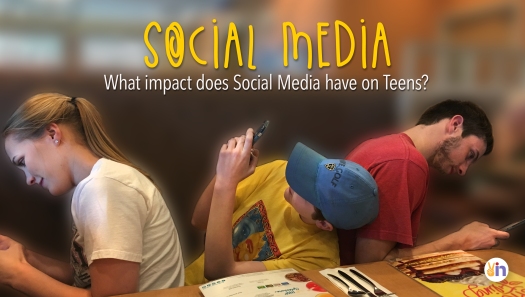
Social Media is here to stay!
Social Media is here to stay and it is impacting the day-to-day lives of our teens! Records, 8 track tapes, cassettes, CD’s, mobile phones, and now smart phones; Radio, television, internet, and now social media. Addictions: alcohol, drugs, pornography, and now phones.
As with everything under the sun, it is up to us to guard our hearts and our minds. What harm can be done in teens lives through social media? We have always had to use self-control in a self-indulgent world. Today is no different.
Are teens desensitized to social media or have they just grown up in the middle of it and have a better handle on how to navigate through it? In this video, we have examples of it being used for good; connecting; being used for bad; ridiculing; being used for ugly; bullying. Future articles will explore how teens can self-evaluate the healthiness of this impact from a personal perspective.
tg
My focus was to incorporate a variety of opinions from teachers and students in order to compile a general idea on the impact social media has on teens. The title page was created in Photoshop CC by taking a fun existing photo, blurring the background and adding the title and bug and then importing into Premiere CC. The videos were recorded using an iPhone 6 and a Canon EOS 7D and then imported. Once previewed, the most prevalent and/or emotional parts were copied and pasted into a second sequence and then named to keep organized and simplified. Once the cuts were in order, Ripple Delete was used to bring each cut together.
Because the indoor video with the three teens was a little bland, I Adjusted the Lighting Effects to directional lighting with an intensity of 20. Each interview was offset to the right or left and then zoomed in by using Position and Scaled under Video Effects. Each name was created with text in Premiere CC and then the opacity was decreased to 80%. The placement was duplicated by noting the measurements for each one and then entered. The text becomes its own graphic in the sequence. It can be shortened or lengthened according to how far you pull out the graphic. Each one was lengthened for the duration of the speaker and then transitioned.
Cross Dissolve was used between each clip and then Dip to Black was used to transition to the rolling credits. The rolling credits were created in the title panel. After creating the text the rolling was created by using Motion and Position under Effect Controls panel. It was very exciting to see how this was created. It’s faster than I would have liked but it was all the time I had left and I had already deleted two and one-half hours of interview time.
Storyboard:
:05 Title Page: Social Media Import-fade to Drew.
:05-:33 Drew: Can be harmless-fade to Conflict.
:34-1:02 Drew: Conflict-fade to Chloe-transition through three main statements.
1:03-1:19 Chloe: Hurting people hurt people-fade to Sammie.
1:19-1:54 Sammie: Ugly: Bullying-fade to black for impact and transition to outside.
1:55-2:09 Keith: Overwhelming emotion-fade to Kaleb.
2:10-2:22 Kaleb: Bad: Ridicule-fade to Jennifer.
2:23-2:40 Jennifer: No Connection-transition two statements and fade to Nathan with motion.
2:41-2:50 Nathan: Good: Connection-fade to Victoria.
2:51-2:55 Victoria: Just a Teenager-fade to black.
2:55-3:00 Black background w Rolling Credits: Text casual.

